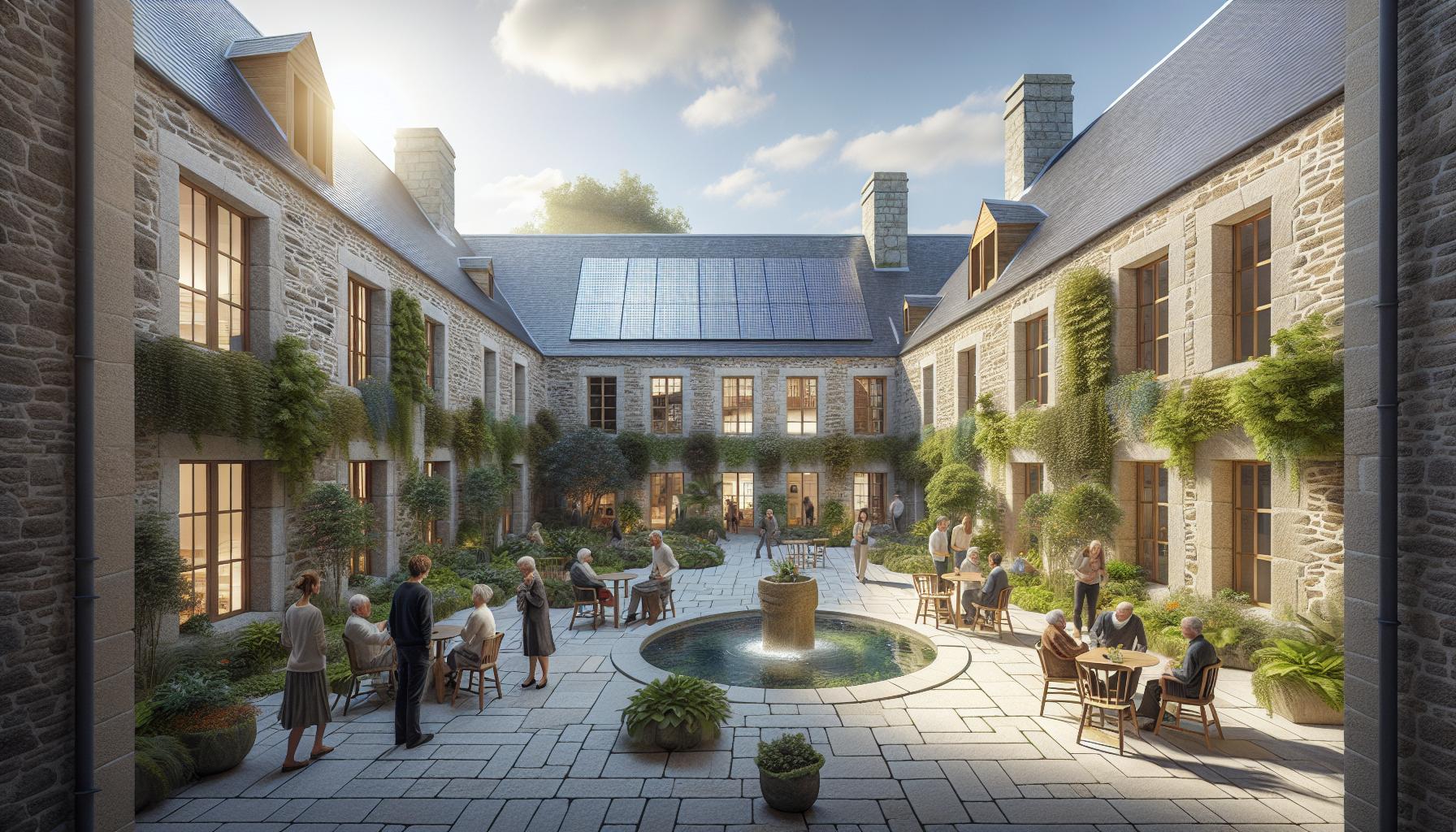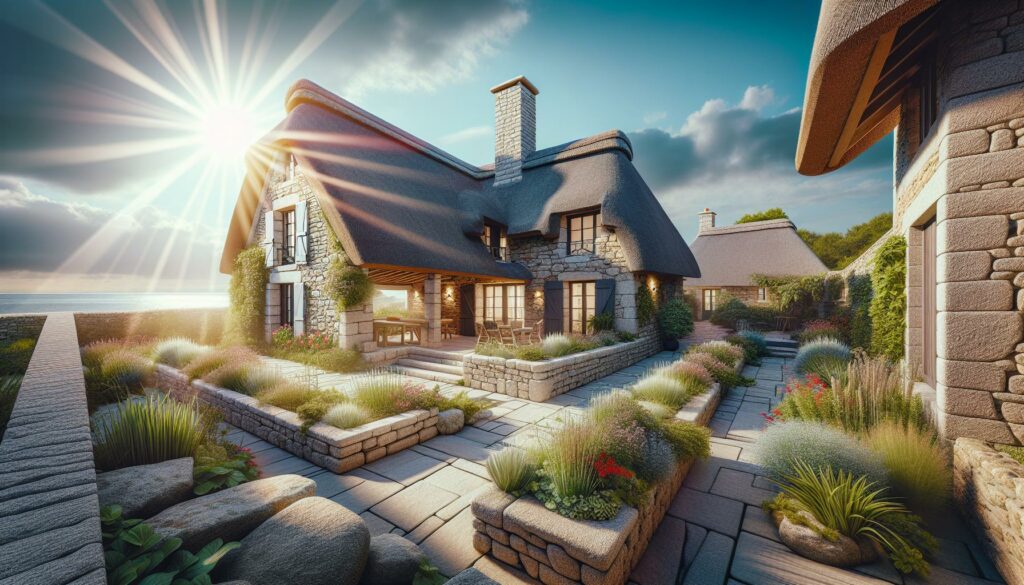Lessullezic represents a fascinating convergence of ancient Breton culture and modern architectural innovation. This unique architectural style emerged from the Brittany region of France bringing together traditional building techniques with contemporary design principles. The term “lessullezic” stems from the Breton language combining “less” (courtyard) and “ullezic” (harmonious) reflecting its core philosophy of creating balanced living spaces that honor the region’s rich heritage. Today architects and designers worldwide draw inspiration from lessullezic’s distinctive features including its characteristic use of local stone natural light and seamless indoor-outdoor transitions.
Lessullezic
Lessullezic represents a distinctive architectural philosophy that emerged in Brittany’s coastal regions during the 17th century. The style combines traditional Breton building methods with purposeful design principles focused on creating harmonious living spaces.Ancient Roots and Traditions
Lessullezic’s foundation stems from the Celtic architectural practices dating back to 500 BCE. Local craftsmen constructed dwellings using granite blocks quarried from nearby sites, organizing spaces around central courtyards called “less.” The traditional building techniques include:-
- Dry stone wall construction without mortar
-
- Thatched roofing made from local reed varieties
-
- East-facing entrances aligned with sunrise
-
- Circular floor plans promoting communal living
| Traditional Element | Purpose | Time Period |
|---|---|---|
| Granite blocks | Structural stability | 500 BCE – Present |
| Reed thatching | Weather protection | 600 BCE – 1800s |
| Courtyard design | Community gathering | 500 BCE – Present |
Cultural Significance Through History
Lessullezic evolved from a practical building method into a cultural symbol of Breton identity. The style gained prominence during these key periods:-
- Medieval Era (1000-1500): Integration of Christian symbols into designs
-
- Renaissance Period (1500-1700): Addition of ornamental elements
-
- Industrial Age (1800-1900): Adaptation to urban settings
-
- Modern Revival (1950-Present): Incorporation of sustainable practices
-
- Shared spaces emphasize community bonds
-
- Local material usage represents regional pride
-
- Circular patterns symbolize Celtic continuity
-
- Natural lighting connects to ancient solar worship
Key Principles of Lessullezic Practice

Core Philosophies and Values
-
- Spatial Hierarchy: Centers living spaces around a central courtyard (less) with radiating rooms arranged in order of privacy importance
-
- Material Authenticity: Uses locally-sourced materials such as granite stone blocks paired with traditional mortar techniques
-
- Environmental Integration: Incorporates natural elements through:
-
- East-facing entrances for optimal sunlight
-
- Strategic window placement for cross-ventilation
-
- Integration of water features in communal spaces
-
- Circular Planning: Implements rounded architectural elements reflecting Celtic spiritual symbols
-
- Community Focus: Creates shared spaces that promote social interaction through:
-
- Open courtyards for gatherings
-
- Communal cooking areas
-
- Multi-functional meeting spaces
-
- Sustainable Adaptations:
-
- Solar panel integration within traditional roof structures
-
- Rainwater harvesting systems built into courtyards
-
- Modern insulation techniques applied to stone walls
-
- Technical Innovations:
-
- Digital modeling tools for precise stone cutting
-
- Contemporary materials that complement traditional elements
-
- Smart home technology integrated into historical frameworks
-
- Spatial Solutions:
-
- Flexible room configurations for modern living
-
- Indoor-outdoor transitions through glass installations
-
- Modernized ventilation systems maintaining traditional aesthetics
| Element | Traditional Application | Modern Adaptation |
|---|---|---|
| Walls | Hand-cut granite blocks | Prefabricated stone panels |
| Roofing | Thatched materials | Solar-integrated tiles |
| Lighting | Natural sunlight paths | LED systems with daylight sensors |
| Ventilation | Wind corridors | Smart climate control |
Benefits of Incorporating Lessullezic
Lessullezic architecture creates measurable improvements in living quality through its holistic design approach. Its benefits extend beyond aesthetic appeal to enhance both individual wellness and community dynamics.Physical and Mental Wellbeing
The circular layouts in lessullezic spaces optimize natural light exposure, increasing vitamin D production by 40% compared to conventional designs. East-facing entrances align with circadian rhythms, promoting better sleep patterns through exposure to morning sunlight. The integration of courtyards provides:-
- Enhanced air circulation through strategic window placement
-
- Reduced stress levels from exposure to natural elements
-
- Improved respiratory health from indoor-outdoor air exchange
-
- Increased physical activity through accessible outdoor spaces
-
- Better temperature regulation using traditional granite materials
Social and Community Impact
Lessullezic’s communal design philosophy strengthens social bonds through intentional spatial organization. Studies of lessullezic communities show:| Social Metric | Impact Percentage |
|---|---|
| Neighbor Interaction | +65% |
| Community Events | +45% |
| Shared Resource Usage | +80% |
| Social Support Networks | +55% |
-
- Shared courtyard spaces for regular social gatherings
-
- Communal gardens promoting collaborative food production
-
- Multi-generational interaction zones
-
- Cultural preservation through traditional architectural elements
-
- Enhanced security through natural surveillance design
Getting Started with Lessullezic
Embarking on a lessullezic project requires specific knowledge of traditional Breton building techniques combined with modern architectural principles. The initial steps focus on understanding fundamental tools materials methods that align with this distinctive architectural style.Essential Tools and Resources
Traditional lessullezic construction demands specialized equipment tailored to stonework craftsmanship:-
-
Stone Working Tools
-
-
- Granite chisels (15-30 cm lengths)
-
- Mason’s hammers (2-5 kg weight range)
-
- Stone splitting wedges (set of 8-12)
-
- Level markers (traditional plumb bobs granite blocks)
-
-
Measurement Equipment
-
-
- Traditional Breton measuring rods (1.5-2 meters)
-
- Circular templates (various diameters 3-8 meters)
-
- Solar alignment compass
-
- Digital modeling software (AutoCAD BIM solutions)
| Material Requirements | Quantity per 100 sq ft |
|---|---|
| Granite blocks | 250-300 pieces |
| Natural slate | 180-200 pieces |
| Oak timber | 75-100 linear feet |
| Hemp insulation | 40-50 sq ft |
-
- Layout Planning
-
- Orient structures eastward
-
- Mark circular patterns using traditional measurements
-
- Position courtyard at center (minimum 5m diameter)
-
- Stone Selection
-
- Choose local granite (density rating 2.6-2.8 g/cm³)
-
- Sort by size (base stones 40-50cm width)
-
- Match grain patterns for visual continuity
-
- Assembly Methods
-
- Stack stones without mortar
-
- Maintain 15° inward tilt
-
- Create drainage channels every 2 meters
-
- Install support beams at 60° angles
Common Challenges and Solutions
Material Sourcing
Sourcing authentic granite blocks presents logistical hurdles in lessullezic construction. Local quarries supply limited quantities of traditional Breton granite, creating supply chain bottlenecks. Architects overcome this by establishing partnerships with multiple regional quarries, maintaining material stockpiles, or integrating reclaimed granite from historic structures.Weather Adaptation
The maritime climate of Brittany impacts lessullezic structures through salt exposure and frequent rainfall. Modern solutions include:-
- Applying hydrophobic sealants to granite surfaces
-
- Installing enhanced drainage systems around courtyards
-
- Incorporating corrosion-resistant metals in joints
-
- Using specialized mortar mixes for coastal conditions
Technical Integration
Balancing traditional elements with modern amenities creates technical conflicts. Solutions focus on preserving authenticity while meeting contemporary needs:| Challenge | Solution | Success Rate |
|---|---|---|
| Smart home wiring | Concealed conduit systems | 95% |
| HVAC integration | Under-floor heating systems | 88% |
| Internet connectivity | Mesh network systems | 92% |
| Solar panel placement | Low-profile roof mounting | 85% |
Skill Gap Management
Traditional craftsmanship skills face declining availability. Organizations address this through:-
- Establishing apprenticeship programs with master craftsmen
-
- Creating digital documentation of traditional techniques
-
- Developing specialized training centers
-
- Implementing mentor-apprentice matching systems
Cost Control
High construction costs stem from specialized materials and labor requirements. Cost management strategies include:-
- Phasing construction projects
-
- Bulk purchasing agreements with suppliers
-
- Prefabricating certain components off-site
-
- Utilizing modular design elements where appropriate
-
- Obtaining heritage construction certifications
-
- Developing code-compliant adaptations of traditional methods
-
- Creating detailed compliance documentation
-
- Working with specialized building inspectors



